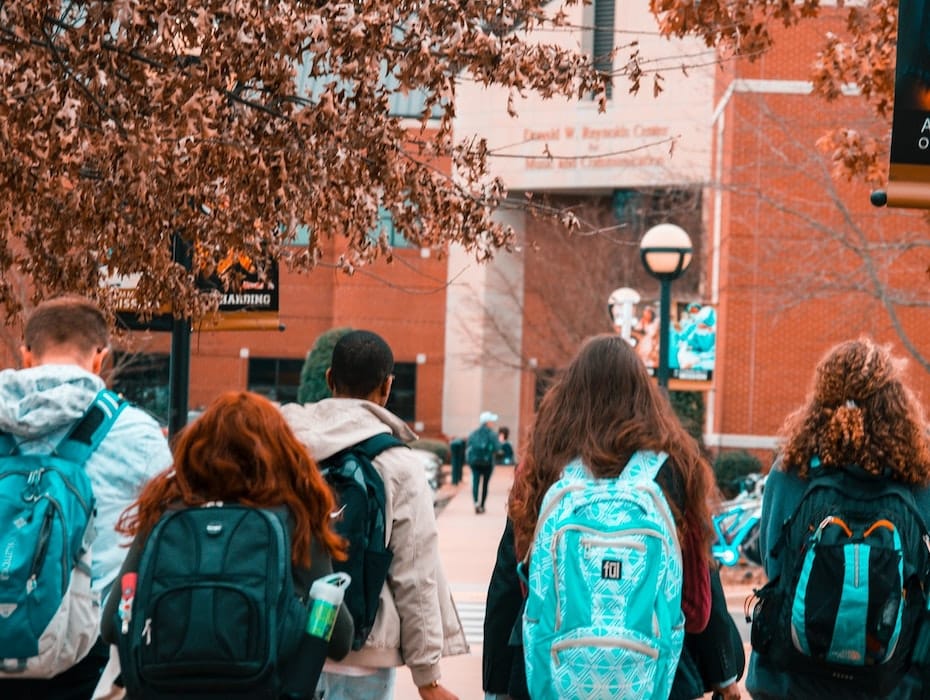Highlights:
- Campus safety is critically important, but strategies for compliant communications to bolster campus safety are sometimes overlooked.
- A combination of multiple communication methods helps to ensure a safe campus.
- A well-designed cloud-based communications platform can provide timely information to all stakeholders regarding critical campus security issues.
Ensuring the safety of students, faculty, staff, and visitors is a critical function for schools. A lot of time goes into reviewing protocols, developing procedures, hiring and training security staff, and many other facets of campus safety.
Often, compliant communications get overlooked in safety planning. It is imperative that all stakeholders receive the information they need regarding safe practices to promote cooperation and security for everyone involved.

The role of communications in campus safety
The following is a look at the role of communications in campus safety, along with strategies and insights on how to optimize communication on your campus.
Topics for communication
There are a number of key safety topics that schools must address with protocols or procedures. While some of these areas require communication primarily among safety and security team members, most also require information-sharing with the campus community.
Common safety topics to address include:
Crime: Schools must legally disclose (Clery Act) criminal activity to the community, and with sexual assault or violent crimes, fast disclosure is required due to the immediate threat posed.
Active shooters: All schools need established procedures for handling active shooters (or similar immediate threats), including communicating the threat to the campus community.
Blood and contaminants: An area of safety that is often neglected is proper training and communication about cleanup of blood and contaminants. Safe handling centers on proper training and provision of equipment and supplies. Schools often have certain employees who receive special training and facilitate processes.
Personal and vehicle safety: Schools need a plan for assisting community members who have concerns about coming and going late at night or at times when on-campus traffic is limited. Additionally, most schools assist people who have routine car issues like a dead battery or keys locked inside.
COVID/Pandemic procedures: Though it may seem temporary, COVID procedures have been in practice for nearly 3 years for many schools and are likely to remain in place for some time. The pandemic has caused schools to consider processes for managing unexpected health outbreaks.

Methods of communication
All of the aforementioned safety topics require communication with various members of the campus community for successful and consistent implementation. Utilizing multiple methods to share information is the best approach to get the message to the people who need it.
The following are effective methods for communicating about campus safety:
Signage and posters
Outdoor signage and interior posters are among common communication tactics to distribute safety information. For instance, schools usually have signs up in parking lots alerting students to numbers to call if they need assistance (such as with personal safety concerns or vehicle issues).
Inside buildings, posters outlining safety procedures in the case of tornadoes, fires, or other natural disasters are typically hung in multiple locations. Having posters in each classroom indicating specific instructions for occupants of that room during disasters is a best practice. Some schools now also have posters with steps for active shooter responses, such as those identified in ALICE Training.
In-class messages
Many of the posters and other peripheral safety messages go unnoticed by students and other community members. It is helpful for instructors to point out the location of safety information, and to go through key procedures with students on the first day of class.
Colleges also normally have syllabus templates for instructors that include critical campus safety information.
Training programs and seminars
Training programs, seminars, and meetings are also good opportunities for dedicated time to communicate safety information with key stakeholders. Schools can include safety training as part of orientation programs and have regular sessions on key topics with students and others early each semester or school year.
Many schools also require faculty and staff (sometimes based on federal or state law) to complete required training for topics like sexual harassment or mandatory reporter circumstances. These trainings happen in-person and virtually.
Direct mail
Sending letters to student and employee homes is an effective way to follow up or provide an alternative way to get key safety messages through. Sending mailers to student homes allows for parents to potentially become part of the conversation as well. They can then discuss safety with their kids and help review and reinforce the message from home.
Email newsletters and updates
Email is a common channel through which schools disseminate information on a variety of topics. Thus, it provides a platform for communication with the entire campus community that is commonly accessed.
You can include safety information in general campus email newsletters or have periodic safety newsletters. In addition, or alternatively, send regular (weekly, bi-weekly, monthly) email announcements dedicated to particular topics.
School website/blog
Your school website and blog are key channels visited by current and prospective members of your campus community. A web page dedicated to safety information and procedures is a must. You can provide access to procedures on each key topic. You might also have training procedures specific to people in roles where they engage in the safety process, such as building captains.
A blog is a great place to get creative and go more in-depth on safety procedures and their importance. You can cover a lot more ground over time in a safety blog, and each article is a piece of content that you can share with community members over time.

Mobile app/text messaging
Many schools have mobile apps that allow for convenient 24/7 access to various types of information. A mobile app works best when it provides information and resources that are easy to access and use in short segments.
A dedicated safety section in your app is a good starting point to present information and resources that are always available. You can also have chat tools that enable community members to quickly submit questions or concerns regarding safety.
Text messaging is another great way to rapidly send out urgent or critical information. Some schools strongly encourage community members to sign up for real-time emergency notifications, for instance. In addition to efficiency, texts have high open/read rates.
Let RingCentral help you keep your campus secure
The scope of campus safety communication is large. Effective communication requires a consistent, ongoing, multi-pronged approach.
RingCentral offers advanced cloud-based communications solutions dedicated to the education sector. RingCentral allows you to manage and coordinate communication strategies and interactions efficiently across multiple channels, including telephony, chat, real-time text messaging, and more. Even better, it does so in the most secure way possible through dynamic end-to-end encryption.
Find out how RingCentral for Education can help your school optimize campus safety today.
Originally published Mar 22, 2022, updated Jun 12, 2024





